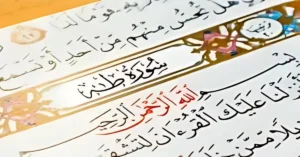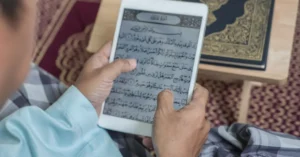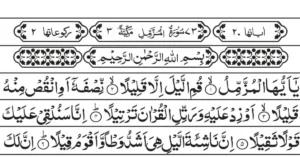Introduction of Al-Sihah al-Sitta
The concept of hadith, the sayings, and the actions of the Prophet Muhammad (PBUM), serve as a most important source of religious guidance and understanding. The collection of 6 authentic hadith books is referred to as Al-Sihah al-Sitta which translates as “The Authentic Six”. These books are considered the most authentic and reliable collection of hadiths. Sihah Sitta is the most important religious source after the Qur’an. These are considered the major sources of Islamic law, ethics, and guidance for Muslims in their personal and collective lives.
Read about What is Bid’ah in Islam.
These are the famous hadith books among Muslims. Sihah Sitta is very reliable for Sunni Muslims and Shiite Muslims. Hadees books are most important for Sunni and Shiite Muslims because they hold significant value in their community.
List of Hadith Books
These are the Six Sitta, the six Authentic Books of Hadith
- Sahih Bukhari, collected by Imam Bukhari
- Sahih Muslim, collected by Muslim b. al-Hajjaj
- Sunan al-Nasai, collected by al-Nasai
- Sunan Abu Dawood, collected by Abu Dawood
- Sunan al-Tirmidhi, collected by al-Tirmidhi
- Sunan ibn Majah, collected by Ibn Majah
Sahih Bukhari
Imam al-Bukhaari wrote this Book (256 AH). His full name was Abu ‘Abd-Allaah Muhammad ibn Ismaa’eel ibn Ibraaheem ibn al-Mugheerah ibn Bardizbah al-Ja’fi al-Bukhaari and he was born in 194 AH (8100 AD) in Bukhara. His eyes had a disease as a child that caused fears of losing eyesight, but he was cured. He was highly smart as a child and had a strong memory, one of the qualities that helped him later in the collection of the Prophet’s (PBUM) words and actions (Hadiths). Stayed in Makkah for some time and studied fiqh, usul, and hadith from Imams.
Then he began to wander from one Islamic region to another, for a total of sixteen years. He visited many centers of knowledge where he collected the hadiths of the prophet (PBUH) until he had collected more than 600,000 hadiths. He referred to a thousand scholars of hadith and discussed these reports with them. Educated people, known for their honesty, piety, and strong faith, comprised them.
Sahih Muslim
Imam Muslim (261 AH) wrote Sahih Muslim. His full name was Muslim Ibn Al-Hajjaj Ibn Muslim Al-Qashiri Al-Nasapuri Abu Al-Hussein. He is one of the leading scholars of Hadith and is the most knowledgeable. Imam Muslim was born in Nissapur on the same day that Imam Shafi’i died in 204 AH. He wrote many books and treatises on hadith, but the most important of his works is his collection of Sahih Sita (Jami). He originally named his book Musnad al-Sahih and mentioned in his book that he had written such a book in response to a question from one of his students.
Meticulously collecting 300,000 hadiths, Imam Muslims subjected them to thorough examination and preserved only 4,000 whose authenticity he has fully proven.
Sunan al-Tirmidhi
Imam Tirmidhi (279 AH) wrote Jami al-Tirmidhi. His full name was Muhammad ibn Isa ibn Surah ibn Musa ibn al-Dhahaq al-Salami al-Tirmidhi, Abu Isa. He came from Tirmidh, once one of the cities of Transoxiana, after which he was named. Imam Tirmidhi was one of the well-known scholars of Hadith and Hadith memorization. He was born in 209 AH and studied under Bukhari. They had some of the same teachers. He had collected 356 hadith.
Sunan Abu Dawood
Imam Abu Dawud (275 AH) wrote Sunan Abu Dawud. His full name was Sulaiman bin Ash’ath bin Shaddad bin Amr bin Ishaq bin Bashir al-Azdi al-Sajistani, he was from Sajistan. Abu Dawud was a well-known Hadith scholar of his time. He is the author of Al-Sunan, one of the six authentic books of Hadith. He was born in 202 AH. This hadith book contains around 48000 hadiths.
Sunan Ibn Majah
Imam Ibn Majah (273 AH) wrote Sunan Ibn Majah. His full name was Muhammad bin Yazid al-Rabi al-Qazwini Abu Abdullah. His father was known as Yazid Majah and hence became known as Ibn Majah. Rabi’a refers to Rabi’a, who was named after her because her father was a freed slave of Rabi’a. This collection contains around 4341 hadiths.
Sunan Nisai
Imam Al-Nasa’I (303 AH) wrote Sunan Nisai. His full name was Ahmad Bin Shuaib Bin Ali Bin Sinan Ibn Bahr Bin Dinar Al-Nasa’i Abu Abd al-Rahman. They came from the city of Nisa in Khorasan after which they were named (Naswi or Nasai). He was born in 215 AH. He was extremely pious and pious and regularly observed the best kind of fasts. This compilation contains about 5,761 hadiths. He was extremely pious and pious and regularly observed the best kind of fasts.
Reliability of Sihah Sitta Among Muslims
The reliability of the six major collections of hadith is generally high among Muslims. Considered to be some of the most authentic and reliable sources of hadiths, which are the sayings and deeds of the Islamic Prophet Muhammad (SAW), these collections hold significant importance. Saihah Sitta includes collections of Sahih al-Bukhari, Sahih Muslim, Sunan Abu Dawud, Jama’i at-Tirmidhi, Sunan al-Nisa’i, and Sunan Ibn Majah. Respected scholars of hadith, who carefully collected and authenticated the traditions attributed to Prophet Muhammad (PBUH), compiled them. Their collections, particularly revered for their strict standards of acceptance of hadith, include the Sihah Sitta. These criteria include the reliability and honesty of the narrators, the sanad of each hadith, and the content of the hadith itself.
Authentication Process of Sihah Sitta
Scholars will investigate the character and integrity of the narrators, making sure that they are trustworthy and that their memory is strong. They will also examine the chains of narrators to ensure that they are continuous and free of any gaps or contradictions. Additionally, they will examine the content of the hadith to ensure that it conforms to the teachings of Islam and does not contradict the Qur’an.
The rigorous methodology and criteria used by the compilers of the Sihah Sitta have created a high level of confidence among Muslims regarding their authenticity. These collections are widely studied and referred to by scholars, students, and those seeking guidance in matters of faith, worship, and daily life.









